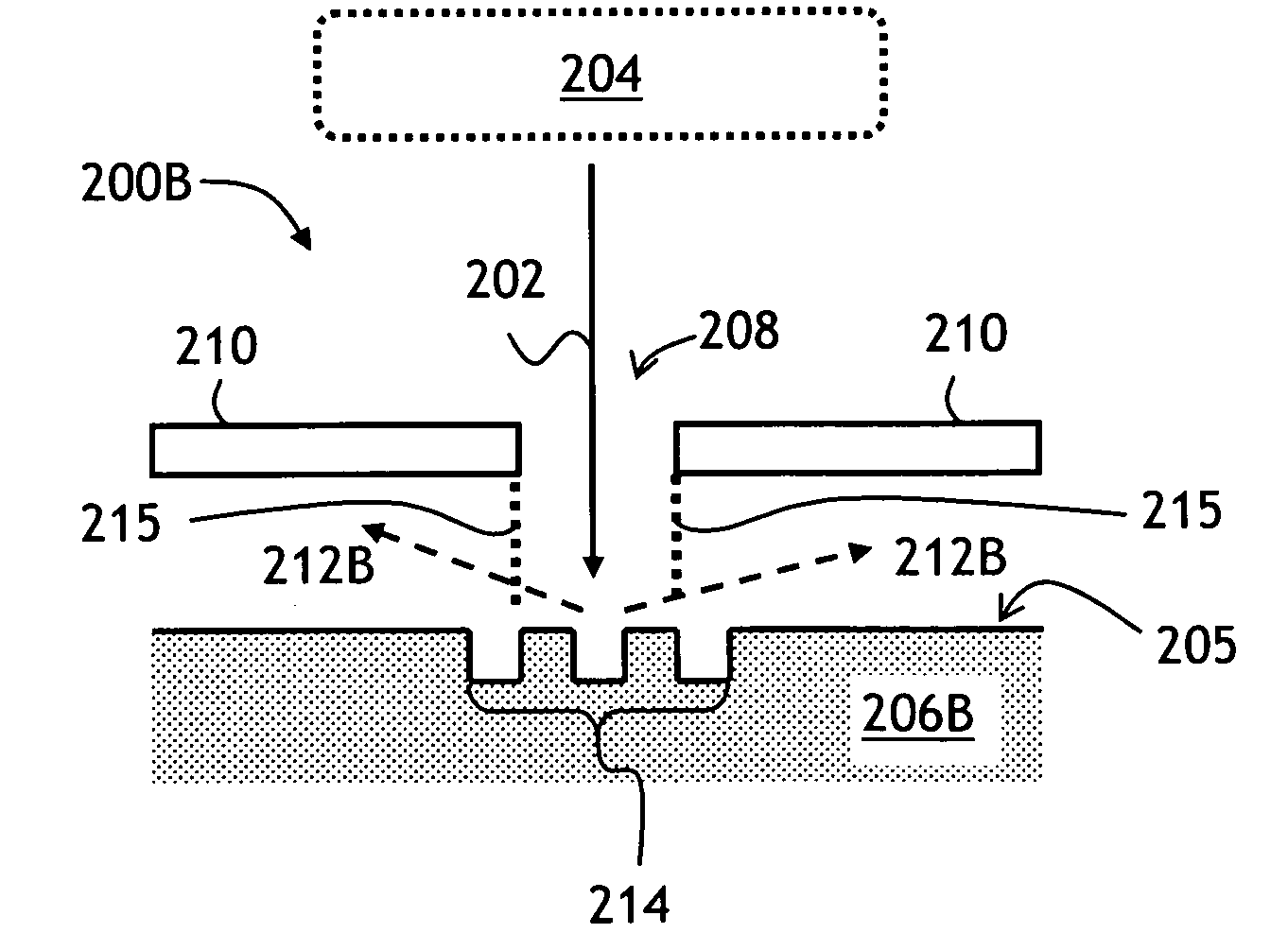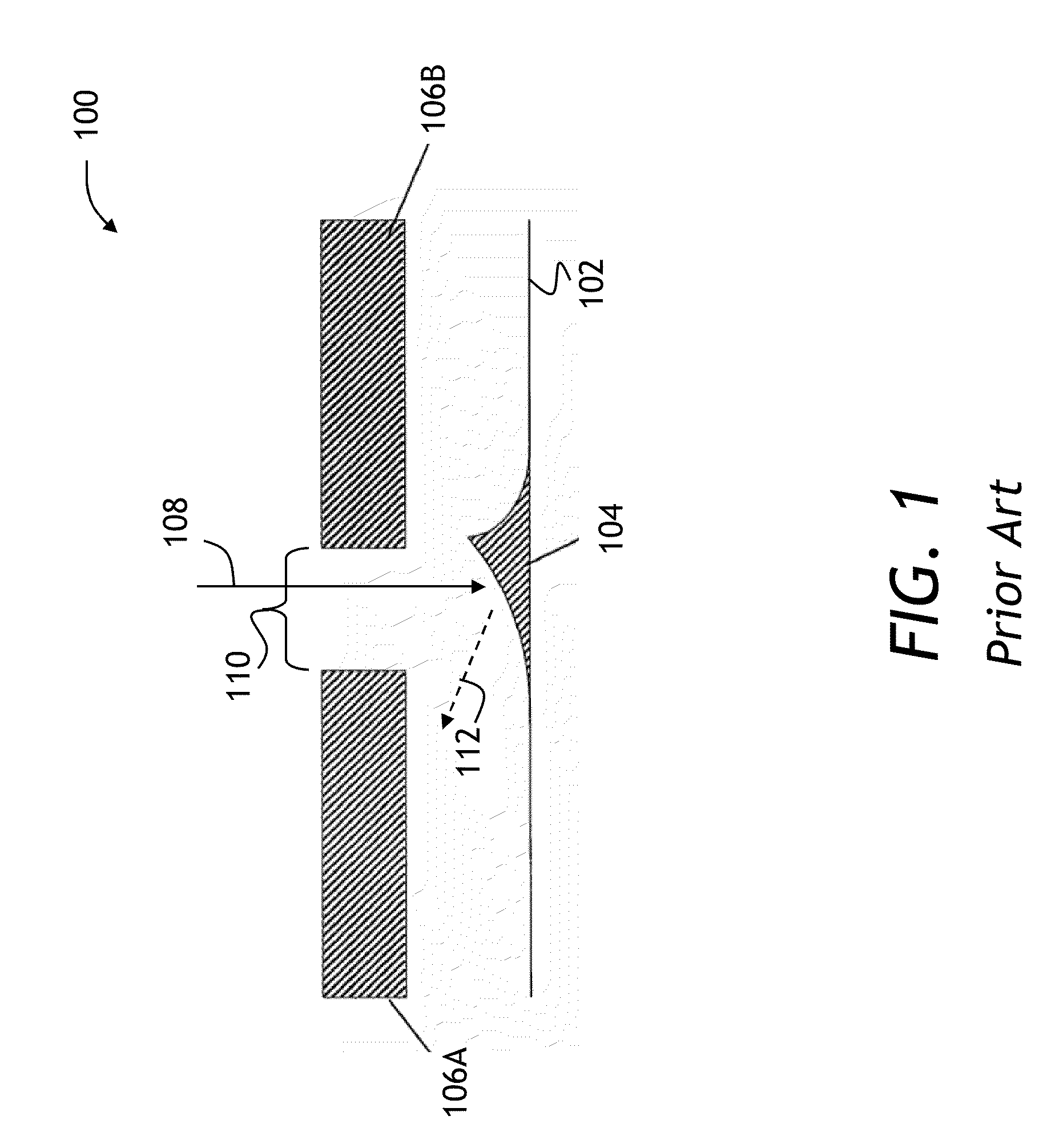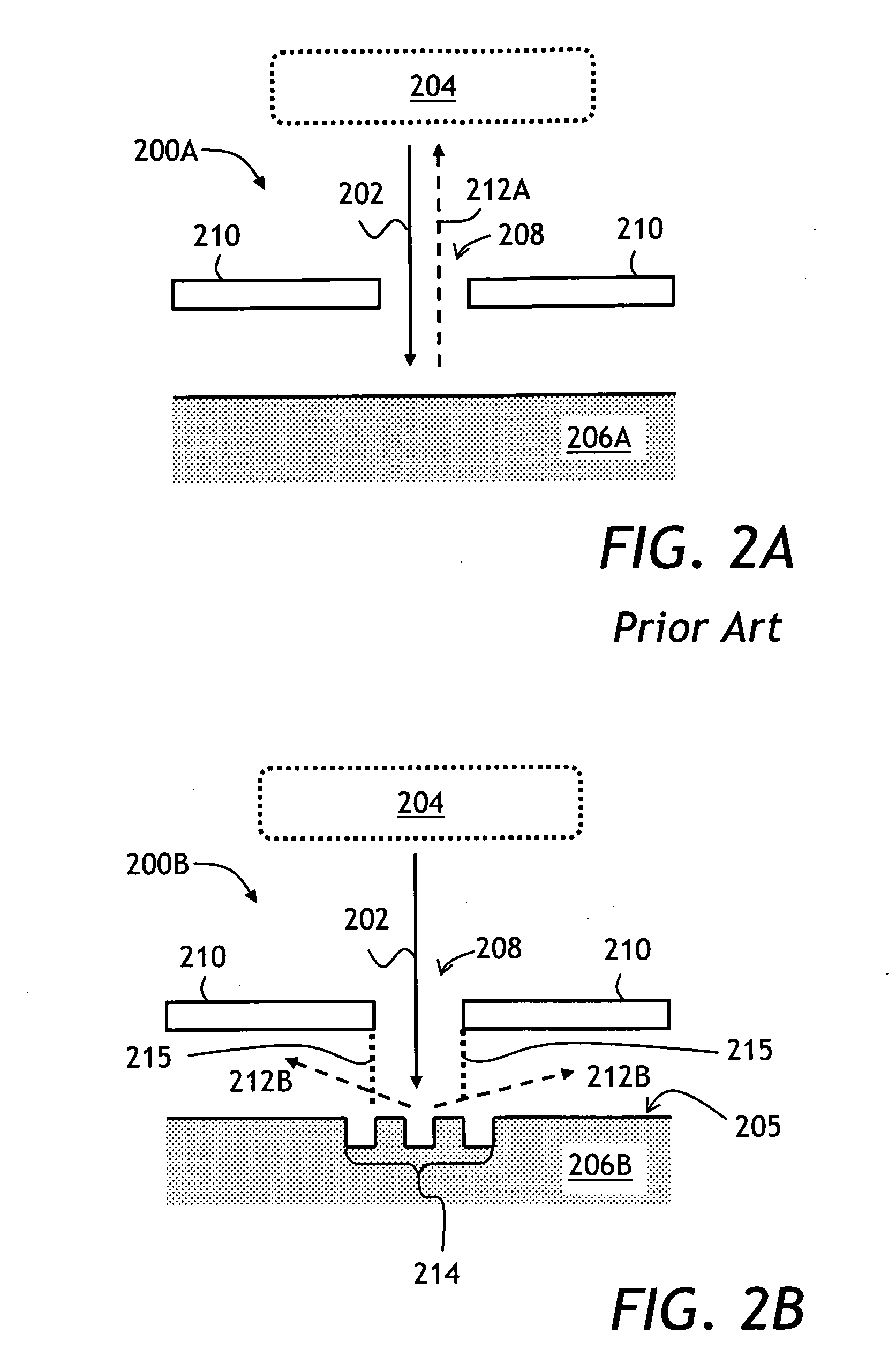MEMS micromirror devices with Anti-reflective structures
- Summary
- Abstract
- Description
- Claims
- Application Information
AI Technical Summary
Benefits of technology
Problems solved by technology
Method used
Image
Examples
Embodiment Construction
[0042]While the present teachings are described in conjunction with various embodiments and examples, it is not intended that the present teachings be limited to such embodiments. On the contrary, the present teachings encompass various alternatives, modifications and equivalents, as will be appreciated by those of skill in the art. In FIGS. 2A, 2B to FIG. 9, like numbers refer to like elements.
[0043]Referring to FIG. 2A, a problem solved by the present invention is illustrated by means of a cross-sectional view of a prior-art MEMS device 200A. In FIG. 2A, a light beam 202 from an optical system 204 reaches a MEMS substrate 206A through a gap 208 between the MEMS micromirrors 210 and is reflected back into the system 204 from the MEMS substrate 206A through the gap 208 as a beam 212A. Thus, an undesirable backreflection arises. The backreflected beam 212A degrades optical performance of the optical system 204.
[0044]To solve the problem, according to the present invention, a diffract...
PUM
| Property | Measurement | Unit |
|---|---|---|
| Fraction | aaaaa | aaaaa |
| Fraction | aaaaa | aaaaa |
| Fraction | aaaaa | aaaaa |
Abstract
Description
Claims
Application Information
 Login to View More
Login to View More - R&D
- Intellectual Property
- Life Sciences
- Materials
- Tech Scout
- Unparalleled Data Quality
- Higher Quality Content
- 60% Fewer Hallucinations
Browse by: Latest US Patents, China's latest patents, Technical Efficacy Thesaurus, Application Domain, Technology Topic, Popular Technical Reports.
© 2025 PatSnap. All rights reserved.Legal|Privacy policy|Modern Slavery Act Transparency Statement|Sitemap|About US| Contact US: help@patsnap.com



